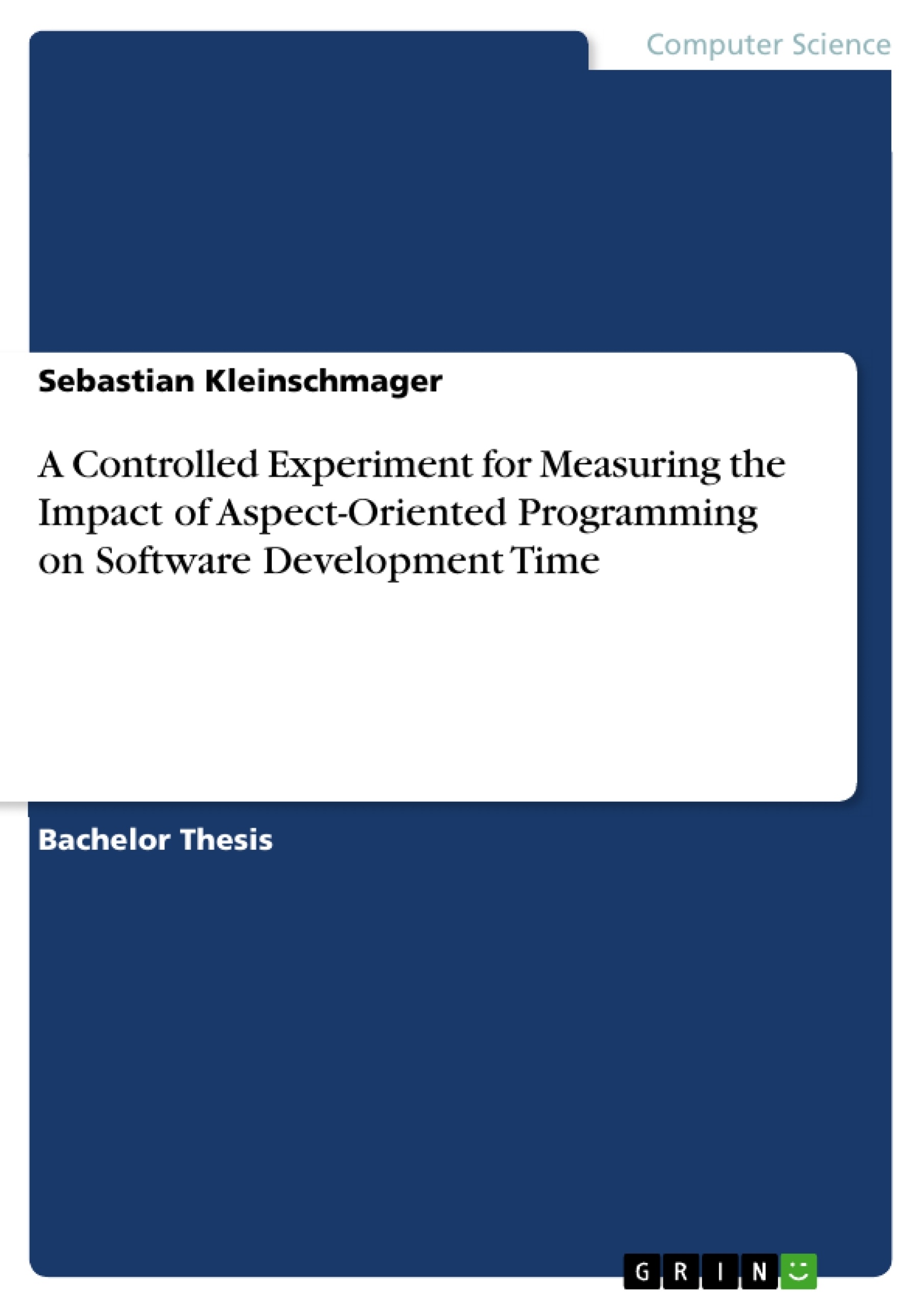In this document, a controlled experiment on aspect-oriented programming that was performed in the context of my bachelor thesis is described and evaluated. The experiment was designed to make the overall performance of software developers using object-orientation and aspect-orientation on a number of tasks comparable. The primary focus of the experiment laid on whether aspect-orientation has a positive impact on the development time when comparing its performance with the performance of the object-oriented approach on the same task.
Inhaltsverzeichnis (Table of Contents)
- Abstract
- Zusammenfassung
- Directory of Figures
- 1 Introduction
- 2 Related Work
- 3 Methodology
- 4 Target Application
- 5 Experiment
- 6 Analysis
- 7 Discussion
- 8 Conclusion
- 9 Questionnaire
- 10 Bibliography
Zielsetzung und Themenschwerpunkte (Objectives and Key Themes)
This bachelor thesis aims to investigate the impact of aspect-oriented programming (AOP) on software development time through a controlled experiment. The primary objective is to compare the performance of developers using object-oriented programming (OOP) and AOP on a series of tasks, focusing on whether AOP can significantly reduce development time compared to OOP for the same task.
- Impact of AOP on software development time
- Comparison of AOP and OOP performance
- Development time optimization through AOP
- Controlled experiment methodology and data analysis
- Application of AOP in a real-world scenario
Zusammenfassung der Kapitel (Chapter Summaries)
- Chapter 1: Introduction: This chapter sets the context for the study, introducing the concept of aspect-oriented programming and its potential benefits for software development. It outlines the research problem and the specific objective of the thesis.
- Chapter 2: Related Work: This chapter reviews existing research on aspect-oriented programming, examining its theoretical foundations and practical applications. It discusses previous studies that investigated the impact of AOP on software development time and provides a comprehensive overview of the current state of knowledge.
- Chapter 3: Methodology: This chapter describes the methodology employed for the controlled experiment, including the design of the experiment, the selection of participants, and the tasks assigned to them. It outlines the criteria used for measuring development time and the data collection methods.
- Chapter 4: Target Application: This chapter presents the specific application used for the experiment. It describes the functionalities of the application and the underlying architecture, providing a detailed understanding of the software context for the study.
- Chapter 5: Experiment: This chapter provides a step-by-step account of the experiment, including the instructions given to the participants, the tasks they were assigned, and the time taken to complete them. It presents the raw data collected during the experiment, including development times and observations on participant behavior.
- Chapter 6: Analysis: This chapter analyzes the collected data from the experiment, examining the differences in development time between the OOP and AOP approaches for each task. It utilizes statistical methods to identify significant trends and patterns in the data, drawing conclusions about the impact of AOP on development time.
- Chapter 7: Discussion: This chapter discusses the findings of the study in the context of existing research on aspect-oriented programming. It analyzes the limitations of the experiment and explores potential implications for future research and practice.
Schlüsselwörter (Keywords)
This work focuses on the key concepts of aspect-oriented programming (AOP), object-oriented programming (OOP), software development time, controlled experiment, and data analysis. The study investigates the impact of AOP on software development time and provides empirical evidence to support the findings. The key terms include development time optimization, crosscutting concerns, modularity, and code reusability.
- Citation du texte
- Sebastian Kleinschmager (Auteur), 2009, A Controlled Experiment for Measuring the Impact of Aspect-Oriented Programming on Software Development Time, Munich, GRIN Verlag, https://www.grin.com/document/199337



